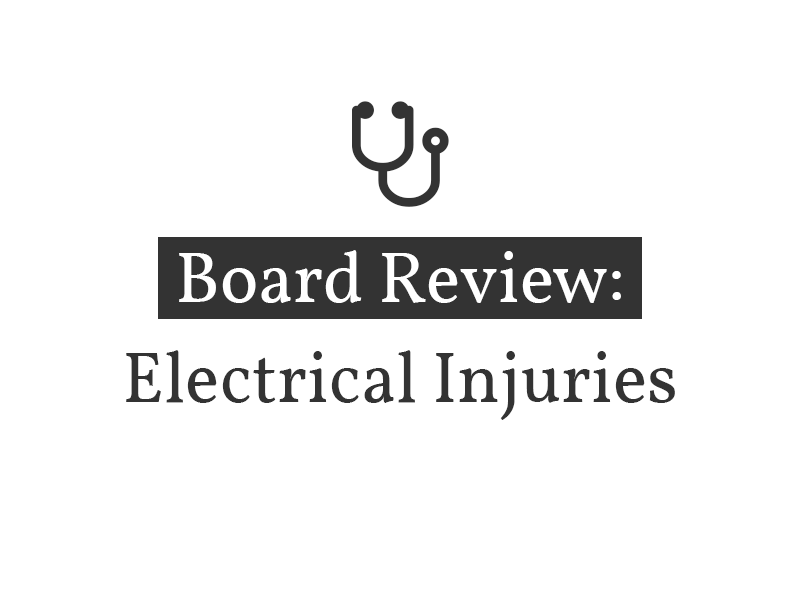SimWars
This post is part of a series developed in preparation for participation in ACEP SimWars. It contains a review of several prominent emergency medicine topics which may be relevant for board preparation. Unless otherwise cited, content is based on HippoEM videos.
- Toxicology
- Dermatologic Emergencies
- Acid-Base Disturbances
- Thyroid Emergencies
- Adrenal/Pituitary Emergencies
- Oncologic Emergencies
- Bleeding Disorders
- Hematologic Emergencies
- Submersion Injury
- Radiation Exposure
- Hypothermia
- Heat Emergencies
- Electrical Injuries
- Bites
- Altitude and Dysbarism
- Pediatric Emergencies
Physics
- High-voltage defined as >1,000V
- Voltage related to injuries current via resistance (V=IR)
- AC is 3x more lethal than DC
- Fluctuation at 60Hz causes tetany, maintained grasp on source
Effects
- Dysrhythmia
- DC: asystole
- AC: ventricular fibrillation
- Delayed dysrhythmia uncommon
- Burn
- Tissue ischemia: vascular spasm or thrombosis
- CNS: AMS, seizure, ICH, neuropathy
- MSK: posterior shoulder dislocation
Management
- Asymptomatic: None
- Mild (i.e. small burn): ECG, UA (rhabdo)
- High voltage: Labs, CT, admit for observation
- Pediatrics: oral commissure burn, discharge with plastic surgery follow-up if no LOC, normal ECG, tolerating PO. Risk of delayed labial artery bleeding.
Complications
- Keraunoparalysis: current travels up and down lower extremities causing transient paresthesia and paralysis.
- Trauma: TM rupture, other mechanical injuries

